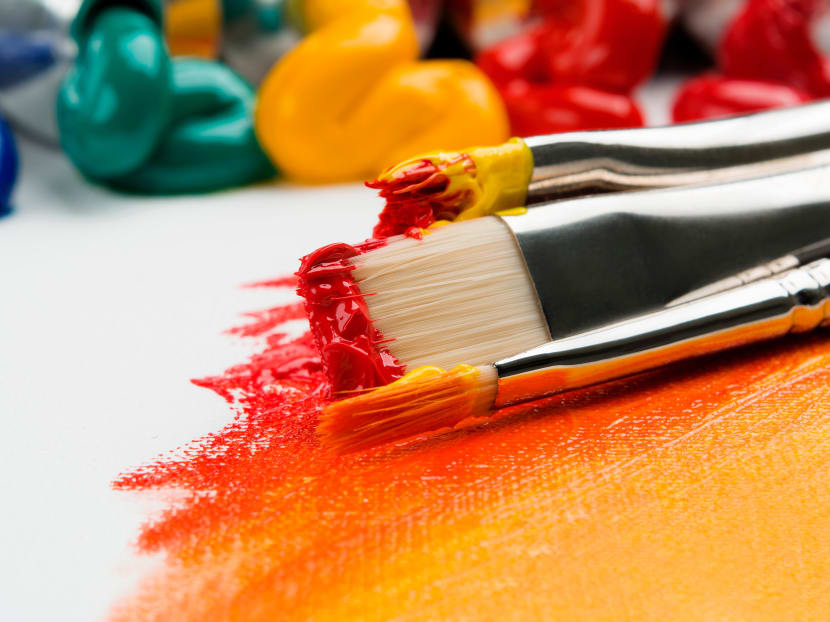Master the art of investing in art
From art fairs to galleries offering low-cost as well as high-end artwork, a multitude of organisations promote art as an investment. However, before investing in art, it is important to understand what it entails, including possible risks and the likely returns.

They are high-risk, illiquid, opaque and unregulated investments. But why should you not rule out investing in art? Read on to read out.
From art fairs to galleries offering low-cost as well as high-end artwork, a multitude of organisations promote art as an investment. However, before investing in art, it is important to understand what it entails, including possible risks and the likely returns.
Art can be an attractive investment over the long run, according to consulting firm Deloitte, as it generates a moderate positive real return.
But the flip side of art investments, Deloitte adds, is that they are high-risk, illiquid, opaque and unregulated. They can also come with high transaction costs and are at the mercy of erratic public taste as well as short-lived trends.
Moreover, artworks do not generate cash flow, except perhaps some income through lending, and they incur expenses for storage and insurance. An additional issue here in Singapore is that storing art safely in not-so-spacious homes, in a hot and humid climate, can be a challenge.
So, if there are many downsides, why invest in art?
One reason is simply that you get to have something enjoyable that you see in your home every day. Compared to equities or bonds, art is very tangible and visible.
Even experts advise buying art that you like, rather than simply what others recommend.
Beyond that sensory experience, you can make money by investing in art.
Well-regarded art price database Artprice found that a well-diversified portfolio of contemporary artworks generated an average annual yield of 7.6 per cent between 2000 and 2017.
Its new Artprice 100 index, focusing on the art market’s “blue-chip” artists, shows that its performance largely exceeds the United States S&P 500 stock market index over the longer term.
Average annual returns of 8.9 per cent added up to a total 360 per cent increase in price over 18 years.
A study published by JP Morgan also found that the volatility of art prices over the long term was lower than US and international equities as well as commodities.
JP Morgan said there is evidence that art prices operate within their own market bubble rather than simply following general economic conditions. Thus art prices have fluctuated independently of investments such as shares, bonds and property funds.
Art investors still need to be careful, though, as an earlier study by Wolfgang Wilke from Dresdner Bank found prices for art, especially in lower price categories can sometimes drop quickly when economic conditions worsen.
It’s important to note, too, that some experts estimate that only 0.5 per cent of paintings purchased are ever resold and that fees for sales can be 40 per cent or more.
HOW TO INVEST
If you want to invest in art, the first step is to learn more about it. A good place to start is with online art investment courses run by reputable auction houses such as Sotheby’s Institute of Art, at sothebysinstitute.com, or Christie’s Education, at christies.edu.
When you find artwork that you like, you should learn about the artist and look online at auction house websites or sites such as Artprice for past sales results. The chances of an increase in price are better when an artist has been featured in reputable galleries or acquired by major museums.
While prices can range from a few hundred dollars to millions of dollars, starting with lower-priced investments may be beneficial.
Artprice estimated that the average price for a work of contemporary art was US$27,600 in 2017.
When you want to buy art, you can head to renowned auction houses such as Sotheby’s or Christie’s. Plenty of lower-priced options are available too.
There are many art galleries in Singapore, so you can look for them online and start visiting them to find art pieces you like.
The Singapore Affordable Art fair in November 2019 will have affordable contemporary art shown by a variety of local, regional and international galleries
A local firm called Art Works has a gallery where investor can obtain advice and purchase art, and the firm says it leases art to corporate clients with returns of 6 per cent annually.
You can also purchase artwork online at sites such as Paddle8 and Saatchi Art, which display art and will ship it to you after you buy it.
Saatchi Art also publishes an annual Invest in Art report and says that many of the artists featured in its Invest in Art report have gone on to enjoy significant success. A New York City startup, Masterworks, lets people invest in art by securitising it, so that investors can buy shares in artwork just like they would buy shares in a company.
While you’ll need to do your research before investing in art and be very careful in selecting artists as well as dealers you work with, art can offer reasonable investment returns. As many investors also note, too, the worst case is that you’ll have a piece of art that you enjoy and that brightens up your home.






